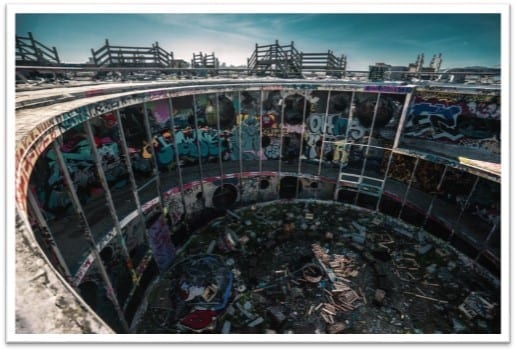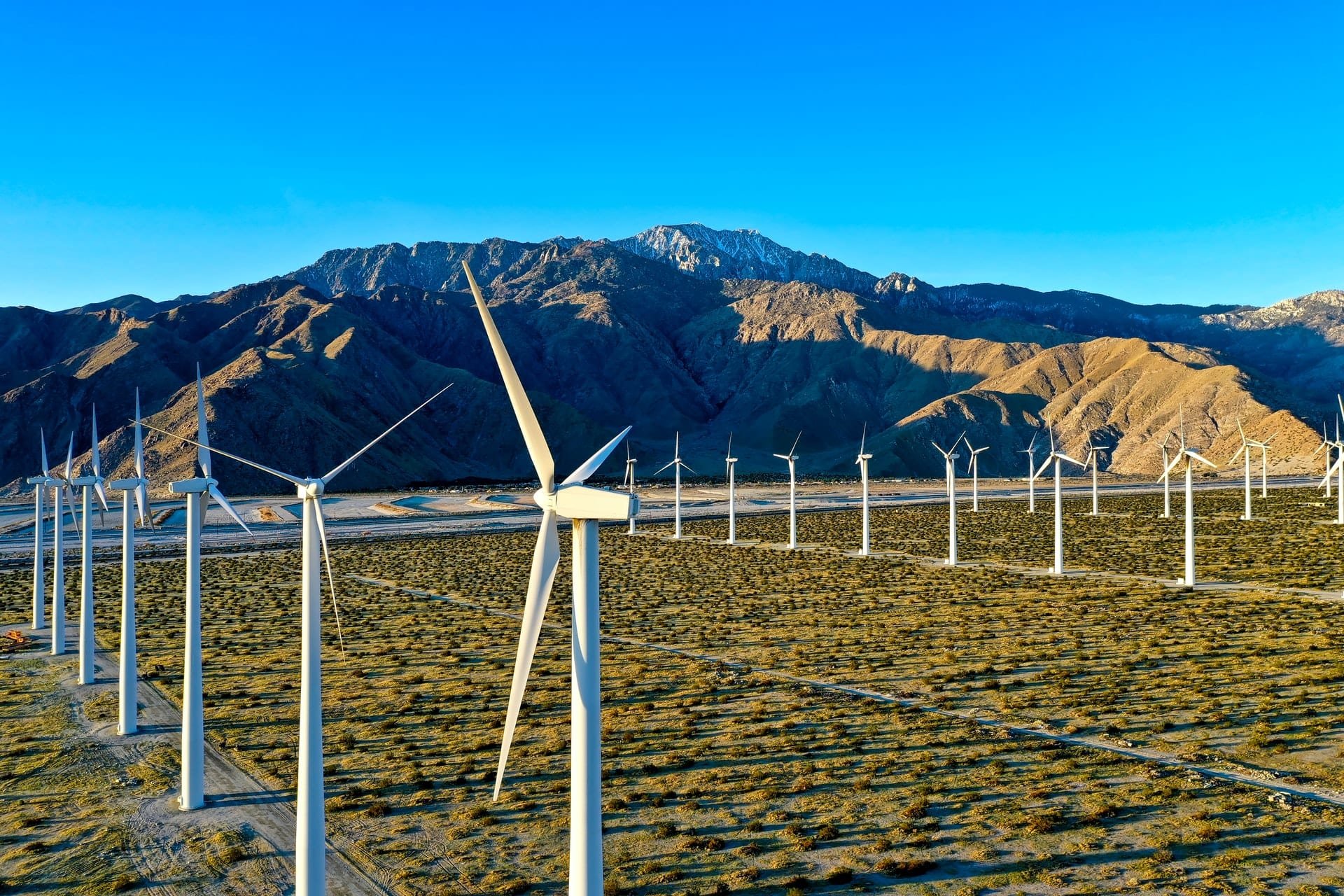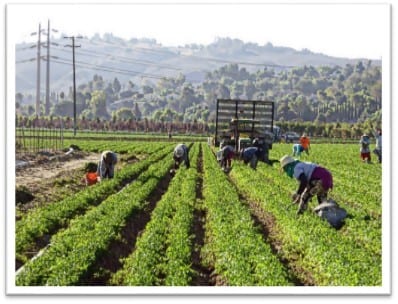 Industrial systems power our globalized world. Since the Industrial Revolution, advancements in technology brought increased efficiency in creating, managing, and distributing goods and services. At the same time, these systems have fueled human rights abuses, destruction of communities, and ecological damages. Today, the COVID-19 pandemic has further exposed many cracks in these systems, from worker health and safety, to city waste management, to the distribution of goods.
Industrial systems power our globalized world. Since the Industrial Revolution, advancements in technology brought increased efficiency in creating, managing, and distributing goods and services. At the same time, these systems have fueled human rights abuses, destruction of communities, and ecological damages. Today, the COVID-19 pandemic has further exposed many cracks in these systems, from worker health and safety, to city waste management, to the distribution of goods.
As the global population continues to grow, urbanize, increase in middle class, and trend younger, how can we create sustainable and inclusive cities and communities? How can we re-imagine industrial systems so they support economic and social progress, safeguard human rights, and protect the environment for everyone? How can a growing youth population advocate and organize this change?
How does population growth factor in and relate to issues related to industrial systems? Read on for some connections between industrial systems and population growth. Background readings for this topic and links to news articles, videos, and reputable sources for further research can be found here.
Procurement of Raw Materials
Raw materials are the basic ingredients that make many of the products we need and use today, from food and clothing to cars and smartphones. However, many raw materials are finite, or non-renewable, resources. The process of obtaining raw materials can damage the environment, human health, and human rights. For example, extracting palm oil, a raw material used in many things, from shampoo to candy bars, has often caused deforestation in tropical rainforests, harming habitats and biodiversity. Cobalt, a main material used to make lithium ion batteries for cars and technology, has been linked to child labor and other exploitative issues in the Democratic Republic of the Congo. These are only a few examples.
The world population is projected to grow to 9.6 billion by 2050, and we would need the equivalent of three planet Earths to fuel current lifestyles at that size, according to the UN. Consumption from more affluent populations is at the heart of this problem. The world’s material footprint has been rapidly increasing in the past two decades and the world’s middle class population is expected to grow in the coming decade.
What role do governments, businesses, and consumers have in ensuring the sustainable procurement of raw materials? How can countries promote economic progress and meet the needs of a growing middle class while ensuring sustainable extraction of raw materials?
Waste Management
Humans generate over 11 billion tons of waste each year, ranging from household trash to hazardous factory or hospital waste. When waste is not managed properly, it can harm human and animal health and the local environment.
In the next few decades, most of the world’s population will live in urban areas and this rapid urbanization calls for improved waste management systems. However, in many places, waste management policies are weak or don’t exist due to poor leadership, lack of infrastructure or funding, and even the COVID-19 pandemic, which halted recycling and compost programs in some U.S. cities. The increase in single-use items (such as facemasks and take-out containers) and hospital waste also increased during the pandemic, resulting in more waste to manage.
Cities already account for most of the world’s waste, and building sustainable cities means finding ways to improve and create systems that collect, transport, and dispose of waste safely and efficiently. How can cities fund, create, and sustain safe waste management systems? Are there any waste management issues in your community and how can you take action?
CAFOs/Brownfields
CAFOs and brownfields are spaces that contain dangerous chemicals that can harm human health and the environment as they leech into the soil and water, or come into direct contact with people. CAFOs (concentrated animal feeding lots) house many animals in a small space, without vegetation. The runoff from the animal waste can pollute local water systems with bacteria. Many CAFOs are placed within communities that are majority low-income or people of color, where the pollution from these farms can endanger the health of local communities.
CAFOs are popular because they supply meat at a low cost to consumers. Meat consumption is expected to keep rising as a growing middle class population means more people can afford to consume animal protein. Brownfields, on the other hand are abandoned buildings and lots that often contain dangerous chemicals, such as lead, asbestos, or other materials. As population grows, these buildings are increasingly being redeveloped or found near established and growing communities. It is essential that industries are mindful about how they dispose of harmful chemicals.
As urbanization is predicted to increase in the coming decades, how can cities sustainably manage their existing brownfields to protect growing city populations? In addition, how can we address CAFOs and provide both affordable and culturally appropriate food, in efficient, humane, and sustainable ways?
Energy Production
Fossil fuels (oil, gas, and coal) are not sustainable energy sources, but they power most of the world, despite the rise in renewable energy. Today, energy production causes the majority of greenhouse gas emissions, the pollutants that fuel climate change. A growing world population means more energy will be needed to fuel factories, transportation, heating and cooling, and many other modern conveniences.
However, not all countries produce and consume fossils fuels equally, as wealthier nations consume more per capita, both directly (such as consuming electricity) and indirectly (by importing products that take a lot of energy to make). Many of the factories that produce the world’s goods are located in China, and with increasing consumption from a growing middle-class population, it’s important to find ways to sustainably produce energy while supporting countries’ economic growth.
What are the barriers to producing clean energy in your country or community right now? How can you re-imagine energy production so the world can decrease dependence on fossil fuels? What collaborations need to happen?
Production/Distribution of Consumer Goods
In our globalized world, the production and distribution of consumer goods often happens in different stages, across different countries. This global value chain has many steps, but it’s vulnerable. Big events, from pandemics to global conflicts, can disrupt this chain, making it difficult for people to obtain necessities like food and medicine. Along with disruptions, producing and transporting many of our world’s goods creates harmful greenhouse gases which cause climate change. Think about how much energy it takes to make a pair of shoes: from the lights in the factory, to the machines, and the trucks or airplanes that distribute the shoes around the world.
As the world’s middle-class population is expected to grow by 2030, so does the demand for goods, delivered quickly and affordably. Furthermore, in regions with weaker transportation infrastructure, population growth in those areas means more people will need access to basic needs and goods, but disruptions in the supply chain can greatly impact that access.
How can we create resilient supply chains that deliver goods efficiently to more people, despite disruptions? Furthermore, how can we ensure sustainable production and distribution of goods that reduce carbon footprints and protect human rights?
Occupational Health and Safety
Safe and decent working conditions are important components of worker rights, health, and well-being. However, many jobs lack protections and have unhealthy or unsafe working environments. The COVID-19 pandemic further worsened many of these existing issues, while creating new, unsafe environments for many essential workers.
Whether it’s farmworkers enduring extreme heat and pesticides, warehouse employees working in grueling conditions to fulfill customers’ online orders, or wildfire firefighters exposed to chemicals from burning homes, worker health and safety is often undermined by climate change and unjust or ineffective policies.
As populations grow and continue to urbanize, how can we protect workers in high-density areas from the threats of climate change, pandemics, and unjust business policies? How can we protect the farmworkers who plant, harvest, and package our food? As the world’s population trends younger, how can youth advocate and be a source of change as they enter the workforce?
Image credits: Treasure Island abandoned site (Joseph Barrientos on Unsplash); Wind turbines (Cameron Venti on Unsplash); Day workers by Linnaea Mallette (CC0 Public Domain)





